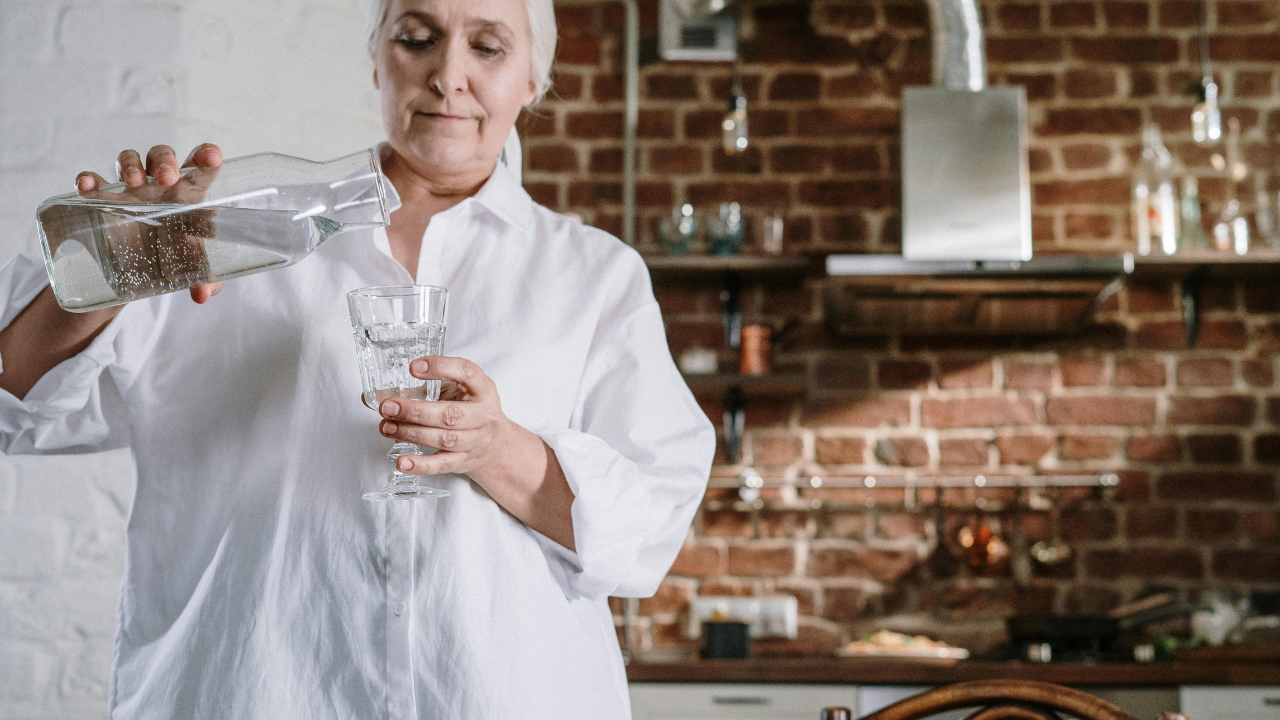How to Keep Seniors Cool and Hydrated During the Summer
How to Keep Seniors Cool and Hydrated During the Summer
As the summer months roll in, the temperatures can quickly rise, creating a significant risk for seniors, especially those who may already be dealing with underlying health conditions. For older adults, extreme heat poses a greater danger than it does for younger individuals. Their bodies have a harder time adjusting to temperature fluctuations, and dehydration can set in faster. This makes it crucial for caregivers, family members, and seniors themselves to take the proper steps to stay cool and hydrated throughout the warmer months. Keeping seniors safe, comfortable, and well-hydrated during the summer requires a combination of prevention, awareness, and care.
Understanding the risks of heat exposure and knowing how to manage hydration can make a huge difference in preventing heat-related illnesses. Not only does this help maintain physical health, but it also keeps seniors feeling comfortable and able to enjoy the summer season. Here’s how caregivers and families can ensure seniors stay safe during these hot months, keeping them hydrated, cool, and in good spirits.
The Risks of Heat and Dehydration for Seniors
Older adults are more susceptible to heat because their bodies are less efficient at regulating temperature. As we age, our bodies produce less sweat, which is one of the body’s primary methods of cooling itself. Additionally, seniors may not feel thirsty as often, which makes them more prone to dehydration. Dehydration can cause a variety of health issues, including dizziness, confusion, headaches, and even heatstroke. Dehydration can also exacerbate pre-existing medical conditions such as heart disease, kidney disease, and diabetes.
Heat-related illnesses such as heat exhaustion or heatstroke are even more dangerous. Heatstroke, which occurs when the body temperature rises above 104°F, can be life-threatening if not addressed quickly. Symptoms of heatstroke include confusion, fainting, dry skin, and a rapid pulse. It’s essential to act quickly if a senior shows signs of overheating by moving them to a cooler environment, offering fluids, and contacting a healthcare provider.
Hydration is Key to Summer Wellness
One of the most important factors in keeping seniors safe during the summer is ensuring they stay properly hydrated. Since seniors often don’t feel thirsty as easily, they may forget to drink enough fluids, leading to dehydration. Regularly offering fluids, even when they aren’t asking for them, is one of the best ways to ensure they stay hydrated. Water is, of course, the most effective beverage for hydration, but other drinks, such as milk, juice, and electrolyte drinks, can also provide hydration along with additional nutrients.
It’s important to note that caffeine and alcohol, commonly found in many summertime beverages, can have the opposite effect on hydration. These drinks can increase fluid loss, so it’s best to limit their consumption during the summer. Encouraging seniors to avoid excessive sugary drinks, like soda, can also contribute to better hydration, as sugary beverages may contribute to increased thirst and dehydration in the long term.
Hydration doesn’t just come from drinks; seniors can also get hydration through the foods they consume. Fruits like watermelon, cucumbers, and strawberries are high in water content and can help maintain fluid balance while providing vitamins and minerals. Incorporating hydrating foods into meals can support their overall hydration and nutritional needs.
Keeping Seniors Cool in Hot Weather
Beyond hydration, keeping seniors cool during the summer months is essential to their health. This can be a challenge, especially in areas without air conditioning or during periods of extreme heat. Using fans, cooling towels, and air conditioning can all be part of the solution. Fans can help circulate air and lower the perceived temperature, especially in well-ventilated spaces. However, it’s important to ensure that fans are used correctly and not placed in a way that could create a wind tunnel that dries out their skin.
If a senior doesn’t have access to air conditioning, it’s important to create a cool environment as best as possible. Keeping windows open for cross-ventilation, using damp cloths on the forehead or neck, and staying in shaded areas can all help maintain a more comfortable temperature. If possible, plan outings or errands during the cooler parts of the day, such as early morning or evening when temperatures are lower.
For seniors who enjoy spending time outdoors, taking regular breaks to sit in a shaded area or indoors with air conditioning can prevent overheating. Light, breathable clothing made from cotton or moisture-wicking materials is important for allowing the body to stay cool. Avoiding tight, dark clothing is key because it can trap heat, making it harder to stay cool. Hats and sunglasses are also valuable accessories when seniors are outside to protect against the sun.
The Importance of Monitoring Health and Symptoms
Monitoring the senior’s health and watching for signs of overheating or dehydration is key during hot weather. Seniors who are at a higher risk of dehydration or heat-related illnesses should be checked regularly to ensure they are staying hydrated and cool. Watching for signs like dizziness, dry mouth, or increased fatigue can be crucial in preventing more severe symptoms of dehydration or heatstroke.
Another important aspect of monitoring is paying attention to any changes in behavior or physical abilities. Seniors who are confused, lethargic, or unable to articulate their needs may be showing signs of dehydration, heat exhaustion, or other underlying health concerns. If there is any doubt about a senior’s condition, it is always best to contact a healthcare provider or seek medical attention. Early intervention can make a significant difference in their recovery and health.
Encouraging a Summer Routine That Prioritizes Safety
Maintaining a summer routine that prioritizes hydration and cooling methods is an important aspect of keeping seniors safe. Routine check-ins, reminders to drink water, and creating a cool, comfortable living environment can significantly enhance a senior’s ability to stay safe in the heat. It’s important to emphasize the importance of staying indoors during peak heat times, which are typically between noon and 3 p.m.
If possible, organizing social activities or group exercises that occur indoors or in cool, shaded areas can keep seniors engaged without exposing them to the risks of extreme heat. Regular hydration reminders can also help, and these should be incorporated into their daily routine. Caregivers or family members can help by offering water or other fluids throughout the day, making it a part of the senior’s regular schedule, just as any other important health measure.
Conclusion
Caring for seniors during the summer months requires attention, compassion, and the implementation of various strategies to keep them both cool and hydrated. Seniors are especially vulnerable to the effects of heat and dehydration, which makes it imperative for caregivers to take proactive steps to ensure their well-being. By ensuring consistent hydration, monitoring health symptoms, and creating a cool environment, caregivers can significantly reduce the risks associated with hot weather.
Providing a comfortable and safe environment during the summer months will help seniors maintain their health, independence, and peace of mind, allowing them to enjoy the beauty of the season without fear of the dangers that heat can bring.

